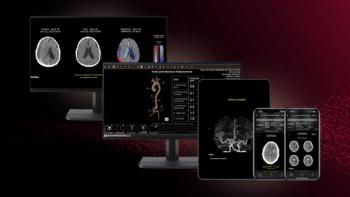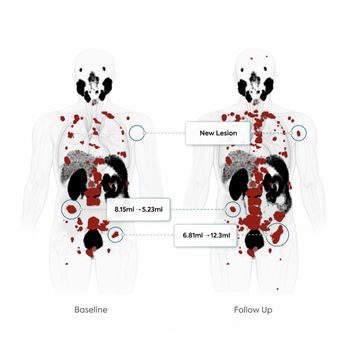
GE launches molecular imaging business unit
Siemens reaches SPECT/CT milestoneLantheus adds new Mo-99 supply
GE launches molecular imaging business unit
GE has upgraded its commitment to molecular imaging with the unveiling at the SNM meeting of a business unit dedicated to this modality. Previously, molecular imaging had been part of the company's CT unit. Former ultrasound chief Terri Bresenham will lead the new MI business. (The newly appointed vice president of molecular imaging describes the significance and strategy behind GE's new approach in the next issue of DI SCAN.)
Bolstering the corporate move is the Discovery PET/CT 690, a superpremium research-oriented scanner, and other recent additions to company's MI portfolio: the SPECT Discovery NM 530 and SPECT/CT Discovery NM/CT 570c configurations. The gamma cameras in each product include flat-panel detectors made from cadmium/zinc/telluride and dubbed Alcyone.
Siemens reaches SPECT/CT milestone
Demand for SPECT/CT is on the rise, according to Siemens Healthcare, which this week announced the pending 500th installation of its hybrid nuclear medicine technology at the Centre Hospitalier Universitaire de Sherbrooke in Quebec. The facility is scheduled to receive a Symbia T6 (six-slice) SPECT/CT system June 18, an installation the company is framing as demonstrating the "clear market shift toward diagnostic SPECT/CT procedures."
Lantheus adds new Mo-99 supply
Lantheus Medical Imaging has cut a deal to receive molybdenum-99, the generator isotope of technetium, from a nuclear reactor in Australia. The agreement, struck with the Australian Nuclear Science and Technology Organization (ANSTO), positions Lantheus to become the first company to supply technetium-99m derived from low-enriched uranium targets, the source used by ANSTO's new OPAL reactor. The first in what Lantheus expects will be regular shipments of Mo-99 is scheduled to arrive soon for use in the company's TechneLite generator line, which is currently distributed to the U.S. and Canadian markets to produce technetium.
Newsletter
Stay at the forefront of radiology with the Diagnostic Imaging newsletter, delivering the latest news, clinical insights, and imaging advancements for today’s radiologists.




























